Ancien Empire
« Les Enfants d’Horus, thĂ©ologie et astronomie »
ENiM 1, 2008, p. 7-14.
 Une enquête menée sur les Enfants d'Horus (Hâpy, Douamoutef, Imséti et Qébehsénouf ) dans les Textes des Pyramides permet de mettre en relief leur véritable identité théologique, leurs fonctions essentielles, ainsi que les correspondants que les Égyptiens leur avaient attribués dans le ciel nocturne, au sein des constellations que nous nommons Orion et la Grande Ourse.
Une enquête menée sur les Enfants d'Horus (Hâpy, Douamoutef, Imséti et Qébehsénouf ) dans les Textes des Pyramides permet de mettre en relief leur véritable identité théologique, leurs fonctions essentielles, ainsi que les correspondants que les Égyptiens leur avaient attribués dans le ciel nocturne, au sein des constellations que nous nommons Orion et la Grande Ourse.
 A synthetic study of the Sons of Horus (Hâpy, Duamutef, Imseti and Qebehsenuf) in the Pyramid Texts is proposed, showing their genuine theological nature, their main functions, and the celestial correspondants the Egyptian gave them in the night sky, inside the constellations we call Orion and Great Bear (Ursa Major).
A synthetic study of the Sons of Horus (Hâpy, Duamutef, Imseti and Qebehsenuf) in the Pyramid Texts is proposed, showing their genuine theological nature, their main functions, and the celestial correspondants the Egyptian gave them in the night sky, inside the constellations we call Orion and Great Bear (Ursa Major).
 Consulter cet article (59416) -
Consulter cet article (59416) -  Télécharger cet article au format pdf (30772)
Télécharger cet article au format pdf (30772)
« Les couleurs dans les Textes des Pyramides : approche des systèmes chromatiques »
ENiM 2, 2009, p. 25-52.
 Les notions de « couleurs » dans l’Égypte ancienne doivent être appréhendées non pas isolément mais selon une approche structurale, à l’intérieur de systèmes complémentaires ou antinomiques. L’analyse du vaste corpus des Textes des Pyramides permet ainsi de mettre en évidence la spécificité et les implications idéologiques du rouge (décher), qui s’oppose aux trois autres couleurs « fondamentales » que constituent le noir (kem), le blanc (hedj) et le vert (ouadj).
Les notions de « couleurs » dans l’Égypte ancienne doivent être appréhendées non pas isolément mais selon une approche structurale, à l’intérieur de systèmes complémentaires ou antinomiques. L’analyse du vaste corpus des Textes des Pyramides permet ainsi de mettre en évidence la spécificité et les implications idéologiques du rouge (décher), qui s’oppose aux trois autres couleurs « fondamentales » que constituent le noir (kem), le blanc (hedj) et le vert (ouadj).
 Concepts of “colors” in the Egyptian language cannot be studied separately; they have to be delt with inside structural systems, either complementary or antinomic. Through the analysis of the large corpus of the Pyramid Texts, this paper tries to highlight the specificity and the ideological background of the red colour (decher), as opposed to three other “fundamental” colors: black (kem), white (hedj) and green (ouadj).
Concepts of “colors” in the Egyptian language cannot be studied separately; they have to be delt with inside structural systems, either complementary or antinomic. Through the analysis of the large corpus of the Pyramid Texts, this paper tries to highlight the specificity and the ideological background of the red colour (decher), as opposed to three other “fundamental” colors: black (kem), white (hedj) and green (ouadj).
 Consulter cet article (86513) -
Consulter cet article (86513) -  Télécharger cet article au format pdf (32576)
Télécharger cet article au format pdf (32576)
« The Construction Phases of the Bent Pyramid at Dahshur. A Reassessment »
ENiM 9, 2016, p. 15-36.
 Les particularités architecturales de la pyramide rhomboïdale de Snéfrou à Dahchour-Sud inspirent deux courants d’interprétation. Le premier consiste à y voir l’expression symbolique délibérée d’une dualité et, le second, des modifications en raison de problèmes structuraux survenus au cours du chantier. Cet article fait le point sur l’état de l’archéologie en y apportant des observations inédites et complémentaires. Certains détails jusqu’alors passés inaperçus, ainsi que la pathologie de l’édifice, amènent à confirmer que les bâtisseurs ont apporté plusieurs changements à leur projet, mais aussi à en saisir les raisons. Une révision complète de l’histoire du monument est ainsi proposée en guise de conclusion.
Les particularités architecturales de la pyramide rhomboïdale de Snéfrou à Dahchour-Sud inspirent deux courants d’interprétation. Le premier consiste à y voir l’expression symbolique délibérée d’une dualité et, le second, des modifications en raison de problèmes structuraux survenus au cours du chantier. Cet article fait le point sur l’état de l’archéologie en y apportant des observations inédites et complémentaires. Certains détails jusqu’alors passés inaperçus, ainsi que la pathologie de l’édifice, amènent à confirmer que les bâtisseurs ont apporté plusieurs changements à leur projet, mais aussi à en saisir les raisons. Une révision complète de l’histoire du monument est ainsi proposée en guise de conclusion.
 The architectural peculiarities of the Bent pyramid built by Snefru at South Dahshur are the subject of two currents of interpretation. The first one consists of seeing the symbolic and deliberate expression of a duality in the design, and the second one, modifications due to structural problems that occurred during the construction work. This article reviews the archaeological situation by bringing unpublished and additional observations into the discussion. Some details that have been unnoticed by commentators so far, as well as a structural pathology of the building, lead to confirmation that the builders changed their project several times, but also reveal the reasons for these changes. A complete revision of the history of the monument is then suggested as a conclusion.
The architectural peculiarities of the Bent pyramid built by Snefru at South Dahshur are the subject of two currents of interpretation. The first one consists of seeing the symbolic and deliberate expression of a duality in the design, and the second one, modifications due to structural problems that occurred during the construction work. This article reviews the archaeological situation by bringing unpublished and additional observations into the discussion. Some details that have been unnoticed by commentators so far, as well as a structural pathology of the building, lead to confirmation that the builders changed their project several times, but also reveal the reasons for these changes. A complete revision of the history of the monument is then suggested as a conclusion.
 Consulter cet article (47857) -
Consulter cet article (47857) -  Télécharger cet article au format pdf (22862)
Télécharger cet article au format pdf (22862)
« Construire un bateau Ă l’orĂ©e des grands fourrĂ©s de papyrus. Ă€ propos du verbe 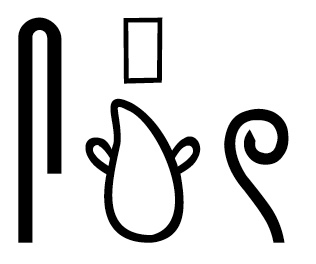 spj, “assembler (une embarcation)” »
spj, “assembler (une embarcation)” »
ENiM 11, 2018, p. 197-224.
 Le verbe spj est habituellement traduit « attacher les parties d’un bateau en papyrus ou en bois ». Cependant, en raison du déterminatif très particulier qui accompagne ce mot, le signe N32 de la liste de Gardiner, qui figure une masse d’excréments ou d’argile, certains chercheurs on fait dériver le sens de ce mot d’un sens primitif signifiant « calfater ». Or, le calfatage est un technique apparaissant tardivement dans la construction des bateaux en bois. Ce signe figure en fait un mélange d’argile et de déjections de bovidés servant à colmater les parties faibles d’une coque en bois.
Le verbe spj est habituellement traduit « attacher les parties d’un bateau en papyrus ou en bois ». Cependant, en raison du déterminatif très particulier qui accompagne ce mot, le signe N32 de la liste de Gardiner, qui figure une masse d’excréments ou d’argile, certains chercheurs on fait dériver le sens de ce mot d’un sens primitif signifiant « calfater ». Or, le calfatage est un technique apparaissant tardivement dans la construction des bateaux en bois. Ce signe figure en fait un mélange d’argile et de déjections de bovidés servant à colmater les parties faibles d’une coque en bois.
 The verb spj is usually translated as « to tie the parts of a boat in papyrus or wood ». However, because of the very particular determinative that accompanies this word, the N32 sign of Gardiner’s list, which is a mass of excrement or clay, some researchers have derived the meaning of this word from a primitive signification meaning « caulk ». However, caulking is a technique that appears late in the construction of wooden boats. This sign is a mixture of clay and dung of cattle used to seal the weak parts of a wooden hull.
The verb spj is usually translated as « to tie the parts of a boat in papyrus or wood ». However, because of the very particular determinative that accompanies this word, the N32 sign of Gardiner’s list, which is a mass of excrement or clay, some researchers have derived the meaning of this word from a primitive signification meaning « caulk ». However, caulking is a technique that appears late in the construction of wooden boats. This sign is a mixture of clay and dung of cattle used to seal the weak parts of a wooden hull.
 Consulter cet article (38513) -
Consulter cet article (38513) -  Télécharger cet article au format pdf (20241)
Télécharger cet article au format pdf (20241)
« Ă€ propos de 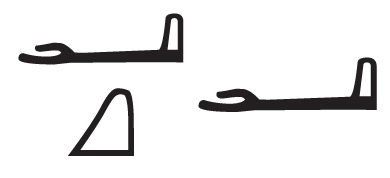 , ʿqʿ, “serrer” »
, ʿqʿ, “serrer” »
ENiM 11, 2018, p. 225-229.
 Le mot ʿqʿ, qui accompagne les figurations de bateaux dans les mastabas de l’Ancien Empire, est habituellement traduit par « attacher ensemble (les parties d’un bateau) ». Cette traduction correspond plutĂ´t au mot spj, ʿqʿ dĂ©signant simplement l’action de serrer les cordes attachant ensemble les bottes de papyrus de la coque d’un bateau.
Le mot ʿqʿ, qui accompagne les figurations de bateaux dans les mastabas de l’Ancien Empire, est habituellement traduit par « attacher ensemble (les parties d’un bateau) ». Cette traduction correspond plutĂ´t au mot spj, ʿqʿ dĂ©signant simplement l’action de serrer les cordes attachant ensemble les bottes de papyrus de la coque d’un bateau.
 The word ʿqʿ, which accompanies the figurations of boats in the mastabas of the Old Kingdom, is usually translated as « tie together (the parts of a boat) ». This translation corresponds rather to the word spj, ʿqʿ simply designating the action of tightening the ropes tying together the papyrus of the hull of a boat.
The word ʿqʿ, which accompanies the figurations of boats in the mastabas of the Old Kingdom, is usually translated as « tie together (the parts of a boat) ». This translation corresponds rather to the word spj, ʿqʿ simply designating the action of tightening the ropes tying together the papyrus of the hull of a boat.
 Consulter cet article (36024) -
Consulter cet article (36024) -  Télécharger cet article au format pdf (20567)
Télécharger cet article au format pdf (20567)
« Une fausse-porte de l’Ancien Empire au MusĂ©e d’ArchĂ©ologie et d’Ethnologie de l’UniversitĂ© de SĂŁo Paulo »
ENiM 11, 2018, p. 231-242.
 À l’exception d’une brève mention dans un catalogue d’exposition sur l’écriture à São Paulo (Brésil), la fausse-porte d’un dignitaire nommé Ptahchepsès Impy, actuellement sous la responsabilité de l’Université de São Paulo, n’a jamais fait l’objet d’une publication complète. En dépit d’un certain nombre de détériorations de surface, comme des fissures et des marques sciage, le monument est une pièce remarquable de l’architecture funéraire de l’Ancien Empire, qui porte encore des traces des pigments originaux de sa décoration.
Sur la base d’une étude comparative des sources de l’Ancien et du Moyen Empire et de l’analyse du style de l’objet, nous proposons dans cet article une datation probable de la VIe dynastie et une origine possible de la nécropole de Saqqâra.
À l’exception d’une brève mention dans un catalogue d’exposition sur l’écriture à São Paulo (Brésil), la fausse-porte d’un dignitaire nommé Ptahchepsès Impy, actuellement sous la responsabilité de l’Université de São Paulo, n’a jamais fait l’objet d’une publication complète. En dépit d’un certain nombre de détériorations de surface, comme des fissures et des marques sciage, le monument est une pièce remarquable de l’architecture funéraire de l’Ancien Empire, qui porte encore des traces des pigments originaux de sa décoration.
Sur la base d’une étude comparative des sources de l’Ancien et du Moyen Empire et de l’analyse du style de l’objet, nous proposons dans cet article une datation probable de la VIe dynastie et une origine possible de la nécropole de Saqqâra.
 Very summarily published in an exhibition catalogue about the writing at SĂŁo Paulo (Brazil) in 2004, the false door of an ancient Egyptian dignitary called Ptahshepses Impy and currently under the responsability of the SĂŁo Paulo University was never properly studied. In spite of a number of injuries on its surface like cracks and sawn marks, the monument is a remarkable piece of the Old Kingdom funerary architecture that still brings traces of original pigments on its decoration.
Based on a comparative study of sources dated from Old and Middle Kingdoms, and the analysis of the object's style, we propose in this paper to date the present monument in the 6th Dynasty and a possible origin from the Saqqara necropolis.
Very summarily published in an exhibition catalogue about the writing at SĂŁo Paulo (Brazil) in 2004, the false door of an ancient Egyptian dignitary called Ptahshepses Impy and currently under the responsability of the SĂŁo Paulo University was never properly studied. In spite of a number of injuries on its surface like cracks and sawn marks, the monument is a remarkable piece of the Old Kingdom funerary architecture that still brings traces of original pigments on its decoration.
Based on a comparative study of sources dated from Old and Middle Kingdoms, and the analysis of the object's style, we propose in this paper to date the present monument in the 6th Dynasty and a possible origin from the Saqqara necropolis.
 Consulter cet article (32165) -
Consulter cet article (32165) -  Télécharger cet article au format pdf (19928)
Télécharger cet article au format pdf (19928)
« DonnĂ©es nouvelles sur les appareils de maçonnerie des grandes pyramides »
ENiM 13, 2020, p. 237-261.
 Une campagne de relevés photogrammétriques effectuée en 2018 a permis de numériser les grandes pyramides construites durant les IIIe et IVe dynasties. Sans prétendre à l’exhaustivité, celle-ci s’était donné comme objectif de promouvoir cette technologie dans l’étude des grands monuments égyptiens. L’analyse des données a permis d’effectuer des observations et des mesures précises sur des parties extérieures jusque-là inaccessibles. Cet article rassemble les données les plus significatives recueillies sur les appareils de maçonnerie des pyramides de Snéfrou situées à Meïdoum et Dahchour, et de la pyramide de Khéphren à Giza.
Une campagne de relevés photogrammétriques effectuée en 2018 a permis de numériser les grandes pyramides construites durant les IIIe et IVe dynasties. Sans prétendre à l’exhaustivité, celle-ci s’était donné comme objectif de promouvoir cette technologie dans l’étude des grands monuments égyptiens. L’analyse des données a permis d’effectuer des observations et des mesures précises sur des parties extérieures jusque-là inaccessibles. Cet article rassemble les données les plus significatives recueillies sur les appareils de maçonnerie des pyramides de Snéfrou situées à Meïdoum et Dahchour, et de la pyramide de Khéphren à Giza.
 A new photogrammetric survey was carried out in 2018 to digitize the visible surfaces of the great 3rd and 4th dynasty pyramids of Egypt. While certainly not exhaustive, the intention of the campaign was to demonstrate and promote this new 3D technology for the study of ancient Egyptian monuments. The data collected this way facilitated observation and the accurate measurement of previously inaccessible external parts of the architecture. This article brings together the most significant new data collected during the survey and presents new information and analysis regarding the stones of the Pyramids of Snefru at Meidum and Dahshur, and the pyramid of Khafre at Giza.
A new photogrammetric survey was carried out in 2018 to digitize the visible surfaces of the great 3rd and 4th dynasty pyramids of Egypt. While certainly not exhaustive, the intention of the campaign was to demonstrate and promote this new 3D technology for the study of ancient Egyptian monuments. The data collected this way facilitated observation and the accurate measurement of previously inaccessible external parts of the architecture. This article brings together the most significant new data collected during the survey and presents new information and analysis regarding the stones of the Pyramids of Snefru at Meidum and Dahshur, and the pyramid of Khafre at Giza.
 Consulter cet article (44588) -
Consulter cet article (44588) -  Télécharger cet article au format pdf (18215)
Télécharger cet article au format pdf (18215)
« A lion in a lettuce? Some ideas on a group of late Old Kingdom maceheads »
ENiM 13, 2020, p. 263-273.
 Cet article étudie les têtes de massues avec ce que l’on décrit habituellement comme un « décor de losanges évoquant un végétal », découvertes dans le complexe mortuaire du roi Teti à Saqqara (début de la 6e dynastie). Compte tenu de divers éléments de preuve, un tel motif rappellerait plutôt la crinière d’un lion et/ou la touffe de sa queue au lieu de représenter un végétal.
Cet article étudie les têtes de massues avec ce que l’on décrit habituellement comme un « décor de losanges évoquant un végétal », découvertes dans le complexe mortuaire du roi Teti à Saqqara (début de la 6e dynastie). Compte tenu de divers éléments de preuve, un tel motif rappellerait plutôt la crinière d’un lion et/ou la touffe de sa queue au lieu de représenter un végétal.
 This article studies some maceheads with a hard-tipped leaf scale motif discovered in the mortuary complex of king Teti at Saqqara (early 6th dynasty). Considering several pieces of evidence, such pattern would recall the lion’s mane and/or tuft of its tail instead of depicting some kind of vegetable, according to previous interpretations.
This article studies some maceheads with a hard-tipped leaf scale motif discovered in the mortuary complex of king Teti at Saqqara (early 6th dynasty). Considering several pieces of evidence, such pattern would recall the lion’s mane and/or tuft of its tail instead of depicting some kind of vegetable, according to previous interpretations.
 Consulter cet article (35051) -
Consulter cet article (35051) -  Télécharger cet article au format pdf (18258)
Télécharger cet article au format pdf (18258)
« L’histoire d’Ḥm-jwnw et du vilain (petit) canard »
ENiM 14, 2021, p. 1-19.
 Partant de l’étude de la composition des menus de repas funéraires à l’Ancien Empire, l’article présente une réflexion sur la perception de la classe des Aves dans la catégorisation des créatures du Monde pharaonique. Un développement particulier est consacré l’Ouette d’Égypte en raison de l’intérêt que représente la résolution symbolique de cette figure animalière complexe, objet tantôt d’approbation et de rejet selon les contextes culturels. On s’interroge, pour finir, sur le sens de deux titres portés par des fonctionnaires au Moyen Empire.
Partant de l’étude de la composition des menus de repas funéraires à l’Ancien Empire, l’article présente une réflexion sur la perception de la classe des Aves dans la catégorisation des créatures du Monde pharaonique. Un développement particulier est consacré l’Ouette d’Égypte en raison de l’intérêt que représente la résolution symbolique de cette figure animalière complexe, objet tantôt d’approbation et de rejet selon les contextes culturels. On s’interroge, pour finir, sur le sens de deux titres portés par des fonctionnaires au Moyen Empire.
 Starting from studying of the composition of funeral meal menus in the Old Kingdom, the article presents a reflection on the perception of the Aves class in the categorization of creatures of the Pharaonic World. A particular development is the Egyptian Goose because of the interest represented by the symbolic resolution of this complex animal figure, which is sometimes approved and rejected according to cultural contexts. Finally, we consider the meaning of two titles of civil servants carried to the Middle Kingdom.
Starting from studying of the composition of funeral meal menus in the Old Kingdom, the article presents a reflection on the perception of the Aves class in the categorization of creatures of the Pharaonic World. A particular development is the Egyptian Goose because of the interest represented by the symbolic resolution of this complex animal figure, which is sometimes approved and rejected according to cultural contexts. Finally, we consider the meaning of two titles of civil servants carried to the Middle Kingdom.
 Consulter cet article (36897) -
Consulter cet article (36897) -  Télécharger cet article au format pdf (15931)
Télécharger cet article au format pdf (15931)
« Ă€ propos des reprĂ©sentations des statues de particuliers dans l’Ancien Empire. Du pseudo-profil Ă la figuration en aspective »
ENiM 14, 2021, p. 135-181.
 Abordée de manière approfondie par M. Eaton-Krauss, la question de la représentation des statues sur les parois des mastabas de l’Ancien Empire est ici réexaminée à partir de certains présupposés théoriques.
Ainsi, dans une première partie, la critique formulée par l’auteur au sujet de l’hypothèse d’H. Schäfer, associant le « profil » de la représentation de la statue à son état « dépourvu de vie » (leblos), est mise à l’étude. Par suite, nous sommes conduit à établir une grille de lecture permettant d’associer, d’une part, la représentation de la posture de la statue que nous qualifions de « pseudo-profil » à un état d’inanimation temporaire et, d’autre part, sa représentation en aspective à la manifestation de sa force vitale, transfiguration résultant de la mise en œuvre des rituels magiques.
Finalement, pour tenter de mieux appréhender la variété des dispositifs visuels relatifs aux différentes séquences du cérémonial consacré à la statue, allant de son façonnage dans l’atelier à son installation dans la tombe, nous proposons d’introduire le principe de condensation narrative, soit le système conventionnel permettant de synthétiser plusieurs étapes de ce protocole.
Abordée de manière approfondie par M. Eaton-Krauss, la question de la représentation des statues sur les parois des mastabas de l’Ancien Empire est ici réexaminée à partir de certains présupposés théoriques.
Ainsi, dans une première partie, la critique formulée par l’auteur au sujet de l’hypothèse d’H. Schäfer, associant le « profil » de la représentation de la statue à son état « dépourvu de vie » (leblos), est mise à l’étude. Par suite, nous sommes conduit à établir une grille de lecture permettant d’associer, d’une part, la représentation de la posture de la statue que nous qualifions de « pseudo-profil » à un état d’inanimation temporaire et, d’autre part, sa représentation en aspective à la manifestation de sa force vitale, transfiguration résultant de la mise en œuvre des rituels magiques.
Finalement, pour tenter de mieux appréhender la variété des dispositifs visuels relatifs aux différentes séquences du cérémonial consacré à la statue, allant de son façonnage dans l’atelier à son installation dans la tombe, nous proposons d’introduire le principe de condensation narrative, soit le système conventionnel permettant de synthétiser plusieurs étapes de ce protocole.
 The question of the representation of statues on the walls of Old Kingdom mastabas, which has been addressed in depth by M. Eaton-Krauss, is here re-examined on the basis of certain theoretical presuppositions.
Thus, in the first part, the author's criticism of H. Schäfer’s hypothesis, associating the "profile" of the representation of the statue with its “lifeless” state (leblos), is examined. As a result, we are led to establish a reading grid that makes it possible to associate, on the one hand, the representation of the statue's posture, which we describe as a "pseudo-profile", with a state of temporary inanimation and, on the other hand, its representation in aspective with the manifestation of its vital force, a transfiguration resulting from the implementation of magical rituals
Finally, in an attempt to better understand the variety of visual devices related to the different sequences of the ceremonial devoted to the statue, from its shaping in the workshop to its installation in the tomb, we propose to introduce the principle of narrative condensation, that is to say the conventional system allowing the synthesis of several stages of this protocol.
The question of the representation of statues on the walls of Old Kingdom mastabas, which has been addressed in depth by M. Eaton-Krauss, is here re-examined on the basis of certain theoretical presuppositions.
Thus, in the first part, the author's criticism of H. Schäfer’s hypothesis, associating the "profile" of the representation of the statue with its “lifeless” state (leblos), is examined. As a result, we are led to establish a reading grid that makes it possible to associate, on the one hand, the representation of the statue's posture, which we describe as a "pseudo-profile", with a state of temporary inanimation and, on the other hand, its representation in aspective with the manifestation of its vital force, a transfiguration resulting from the implementation of magical rituals
Finally, in an attempt to better understand the variety of visual devices related to the different sequences of the ceremonial devoted to the statue, from its shaping in the workshop to its installation in the tomb, we propose to introduce the principle of narrative condensation, that is to say the conventional system allowing the synthesis of several stages of this protocol.
 Consulter cet article (36632) -
Consulter cet article (36632) -  Télécharger cet article au format pdf (14223)
Télécharger cet article au format pdf (14223)
« La maisonnĂ©e de Ty : un haut dignitaire de la Ve dynastie »
ENiM 16, 2008, p. 111-130.
 Cet article a pour objectif premier de recenser l’ensemble des individus et des titres présents dans la sépulture de Ty, un haut dignitaire de la Ve dynastie, tout en étudiant les différentes catégories sociales de ces individus. Par la suite, il est question de visualiser le cercle de personnes gravitant dans la sphère personnelle du défunt, à travers une étude sociale de ses réseaux personnels, rendue possible par ce recensement. Bien que Ty appartienne à l’élite, cet article montre que ses réseaux ne sont pas tournés exclusivement vers cette classe sociale.
Cet article a pour objectif premier de recenser l’ensemble des individus et des titres présents dans la sépulture de Ty, un haut dignitaire de la Ve dynastie, tout en étudiant les différentes catégories sociales de ces individus. Par la suite, il est question de visualiser le cercle de personnes gravitant dans la sphère personnelle du défunt, à travers une étude sociale de ses réseaux personnels, rendue possible par ce recensement. Bien que Ty appartienne à l’élite, cet article montre que ses réseaux ne sont pas tournés exclusivement vers cette classe sociale.
 The main objective of this article is to list all the individuals and titles present in the tomb of Ty, a high dignitary of the Fifth Dynasty, and to study the different social categories of these individuals. The aim is then to visualise the circle of people in the personal sphere of the deceased, through a social study of his personal networks made possible by this census. Although Ty belongs to the elite, this article shows that his networks are not exclusively focused on this social class.
The main objective of this article is to list all the individuals and titles present in the tomb of Ty, a high dignitary of the Fifth Dynasty, and to study the different social categories of these individuals. The aim is then to visualise the circle of people in the personal sphere of the deceased, through a social study of his personal networks made possible by this census. Although Ty belongs to the elite, this article shows that his networks are not exclusively focused on this social class.
 Consulter cet article (22212) -
Consulter cet article (22212) -  Télécharger cet article au format pdf (8193)
Télécharger cet article au format pdf (8193)
ENiM 18 - 2025
4 article(s) - 11 mars 2025.
ENiM 1 à 18 (2008-2025) : 223 articles
4 019 028 téléchargements
8 331 411 consulations.
Index des auteurs

Mots clés

Derniers articles : 
Robert Steven Bianchi
Duplication and Continuity
(ENiM 18, p. 13-36 — 11 mars 2025) 
Frédéric Mougenot
Rénénoutet à la porte de la maison
(ENiM 18, p. 1-12 — 29 janvier 2025) 
CENiM - Mise en ligne des volumes Ă©puisĂ©s : 
 Anne-Sophie von BOMHARD DĂ©cans Ă©gyptiens, CENiM 23, Montpellier, 2020 — (2020)
Anne-Sophie von BOMHARD DĂ©cans Ă©gyptiens, CENiM 23, Montpellier, 2020 — (2020) 
 Jean-Claude Grenier L'Osiris ANTINOOS, CENiM 1, Montpellier, 2008 — (26 dĂ©cembre 2008)
Jean-Claude Grenier L'Osiris ANTINOOS, CENiM 1, Montpellier, 2008 — (26 dĂ©cembre 2008) 
TDENiM - Mise en ligne des volumes Ă©puisĂ©s : 
 Twitter
Twitter 3614978 visites - 3294 visite(s) aujourd’hui - 172 connecté(s)
© ENiM - Une revue d’égyptologie sur internet
Équipe Égypte Nilotique et Méditerranéenne - UMR 5140 - « Archéologie des Sociétés Méditerranéennes » (Cnrs) - Université Paul Valéry - Montpellier III
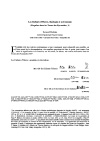
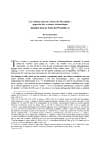
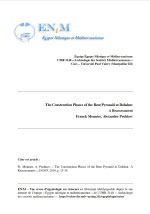
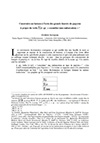
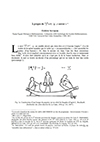
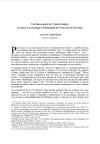
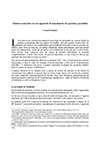
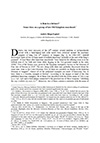
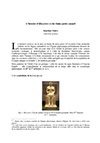
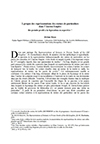






















 Contact
Contact
 Abonnez-vous !
Abonnez-vous ! Équipe Égypte Nilotique et Méditerranéenne
Équipe Égypte Nilotique et Méditerranéenne UMR 5140 « Archéologie des Sociétés Méditerranéennes » (Cnrs)
UMR 5140 « Archéologie des Sociétés Méditerranéennes » (Cnrs) Université Paul Valéry - Montpellier III
Université Paul Valéry - Montpellier III